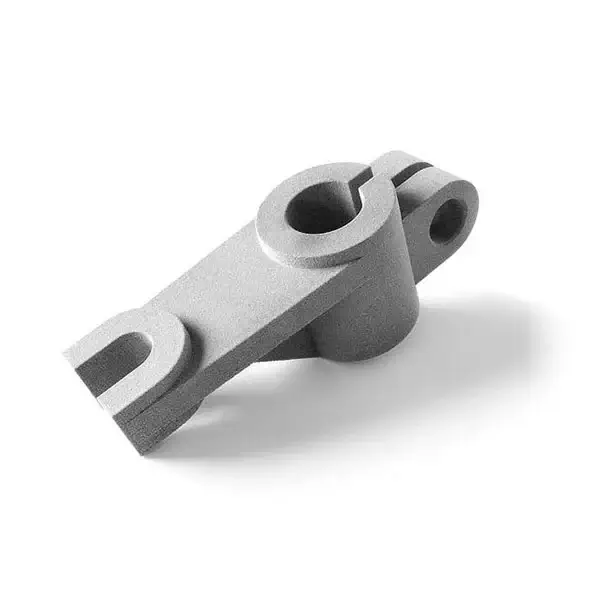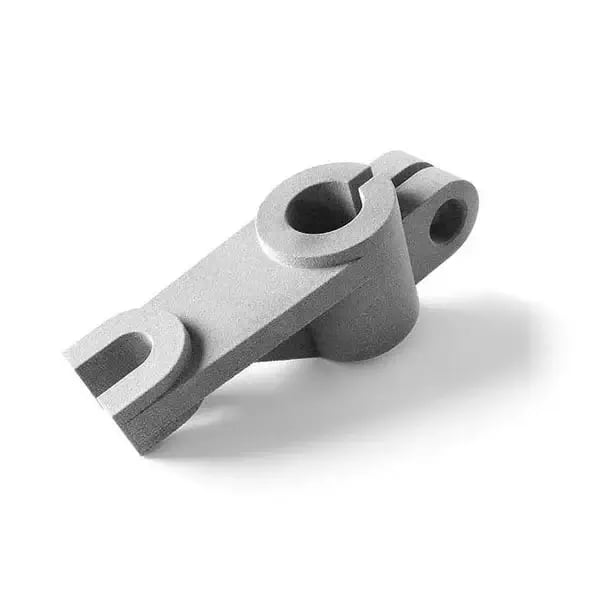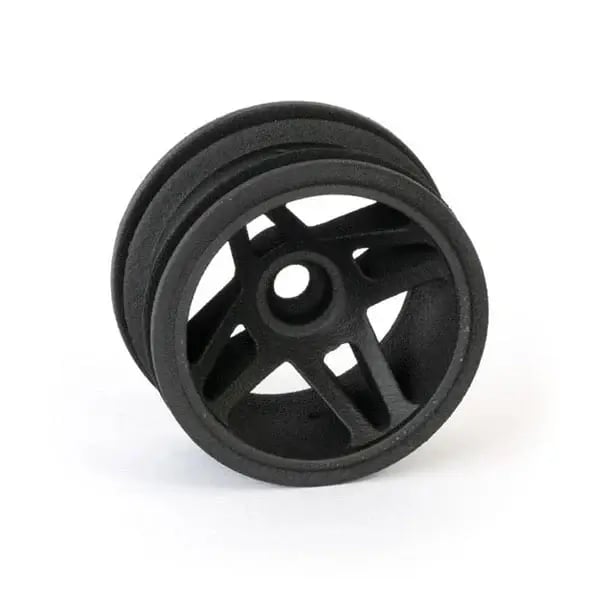Polypropylene
One of the most popular polymers in the world, it is high-performance, lightweight and chemically resistant.

PROS
- Chemical Resistance
- Durability and Fatigue Resistance
- Lightweight and Low Density
CONS
- Warping and Adhesion Challenges
- Limited Resolution
MAIN FEATURES
- 3D printing process: MJF
- Tolerance: <100mm ±0,60mm >100mm ±0,6%
- Max size: 380x284x380mm ; 15x11.2x15in
- Lead time: <5 days
POLYPROPYLENE 3D PRINTING IMAGE GALLERY
QUOTE NOW YOUR POLYPROPYLENE PARTS
free instant quotePOLYPROPYLENE COMMENT
Polypropylene (PP), also known as polypropene, stands as one of the most widely used polymers globally, acclaimed for its remarkable performance, surprising lightweight nature, and ability to withstand the most aggressive chemical agents. Its prevalence across various industries serves as a testament to its versatility and the exceptional mechanical and chemical characteristics that distinguish it. This homopolymer has established itself as a fundamental pillar in a wide array of industrial sectors, thanks to its remarkable resistance to mechanical stresses and chemical corrosion, making it a favored material for numerous applications.
Pros
Chemical Resistance: One of the distinctive traits of polypropylene is its exceptional chemical resistance. This property is of fundamental importance in applications where frequent contact with chemical agents is inevitable. Polypropylene maintains its structural integrity and properties even in the presence of aggressive solvents, detergents, and corrosive chemicals. This robustness makes it the ideal choice for situations that require significant resistance to chemical attacks, ensuring exceptional durability.
Durability and Fatigue Resistance: Polypropylene is renowned for its exceptional durability and remarkable fatigue resistance. This means it can withstand repeated mechanical loads over time without suffering significant damage. This characteristic makes it a reliable material for applications that require consistent resistance to continuous mechanical stress. From the automotive industry to industrial equipment manufacturing, polypropylene proves to be a durable choice in environments where longevity is crucial.
Lightweight and Low Density: Polypropylene's lightweight and low density position it advantageously in many applications. These characteristics make it particularly suitable in situations where weight is a critical factor. In addition to reducing the overall weight of products, its low density provides an additional benefit in terms of energy efficiency. This means that polypropylene not only reduces the weight of products but can also contribute to improving the overall efficiency of the processes in which it is used. The combination of lightweight and strength makes it a highly desirable material in various applications.
Cons
Deformation and Adhesion Issues: In certain circumstances, polypropylene can exhibit deformation problems, especially when exposed to high temperatures. Its tendency to undergo thermal deformations can limit its applicability in situations where operating conditions involve elevated temperatures. Additionally, achieving good adhesion between polypropylene surfaces can prove to be a challenge, reducing the available assembly options for designers and engineers. The difficulty in achieving a strong connection between polypropylene parts may necessitate the use of specialized fastening methods or adhesives, which can result in additional costs and complexity in component assembly.
Limited Resolution: In the context of additive manufacturing, such as 3D printing, polypropylene may have limited resolution compared to other materials. This limitation can affect the precision of the printing process in some applications. Fine details or intricate structures may not be reproduced with the same level of precision and detail as materials with higher resolution. Therefore, it is essential to carefully evaluate whether polypropylene is suitable for a specific 3D printing application, taking into account resolution requirements and desired product characteristics.
Applications of Polypropylene
Automotive: Polypropylene finds extensive use in the automotive industry, where it is employed in the manufacturing of various components. These include liners, bumpers, dashboards, and car batteries. The flexibility, durability, and resistance to high temperatures of polypropylene make it a valuable material in this sector. Its ability to withstand the demanding conditions of the automotive environment and maintain performance over time makes it a reliable choice for automotive component production.
Packaging: The packaging industry makes extensive use of polypropylene, especially in tobacco, and clothing. Polypropylene is chemically resistant, making it suitable for a wide range of containers and packaging. Examples of products packaged with this material include crates, detergent containers and toiletries. Its versatility and strength make it an ideal choice for protecting and presenting various products.
Sports and Fashion: The fashion and sports equipment industries leverage the unique properties of polypropylene. Its superior fire resistance compared to wool, along with its ability to withstand environmental conditions such as exposure to sunlight, mold, water, and bacterial agents, makes it a favored material for many products. It is used in the production of sportswear, accessories, and outdoor equipment, such as beach bags and backpacks. The combination of strength and durability of polypropylene makes it an ideal choice for items intended for outdoor use and for those seeking wear-resistant products.
Medical Applications: Polypropylene has found applications in the medical field due to its ability to resist detergents, disinfectants, solvents, and high-temperature chemical-rich environments. This makes it a reliable material for the production of devices such as syringes, sample vials, and pill containers. It is used in medical devices, medical packaging in general, and packaging systems for solid and liquid pharmaceutical products. Its chemical resistance is crucial in contexts where maintaining the integrity of materials in contact with chemicals or pharmaceuticals is essential.
Household Items: Polypropylene has a significant presence in everyday life, finding application in a wide range of household products. Thanks to its heat resistance, flexibility, durability, and stain resistance, polypropylene is used in carpets, microwave containers, plates, toys, and many other consumer products. It is also found in numerous internal electronic devices such as washing machines and dishwashers. Its versatility makes it a favored choice for manufacturing household items that must withstand daily wear and the stresses of domestic use.
Conclusion
In conclusion, 3D printed polypropylene (PP) is a widely used homopolymer worldwide, renowned for its exceptional performance, surprising lightweight properties, and its ability to withstand even the most aggressive chemical agents. Its extensive presence across a wide range of industrial sectors is a testament to its versatility and remarkable mechanical and chemical characteristics. Polypropylene has become a fundamental cornerstone in numerous applications, thanks to its significant resistance to mechanical stress and chemical corrosion, establishing itself as one of the preferred materials for creating a wide array of products.
Among its primary advantages, its outstanding chemical resistance is worth noting, making it an ideal choice for applications where frequent contact with chemical agents is inevitable, ensuring exceptional durability. Furthermore, its longevity and remarkable fatigue resistance make it a reliable choice for applications subjected to continuous mechanical stress. Its lightweight nature and low density are significant advantages in contexts where weight is a critical factor, contributing to reducing the overall weight of products and enhancing energy efficiency.
However, it is essential to consider some limitations, such as potential deformation issues at elevated temperatures and challenges related to adhesion between polypropylene surfaces, which can limit assembly options. Additionally, polypropylene may have limited resolution in additive manufacturing applications like 3D printing, impacting printing precision in certain situations.
Despite these disadvantages, polypropylene finds extensive use in various industrial sectors, including automotive, packaging, fashion and sportswear, medical applications, and household items. Its exceptional characteristics make it a valuable choice in many applications, contributing to the creation of durable and reliable products. Ultimately, polypropylene continues to be a vital "steel of plastics" in the global industrial landscape.
"I would highly recommend Weerg to anyone looking to make high quality Polypropylene parts."
Polypropylene PROPERTIES
| Tensile breaking load | 30 MPa |
| Modulus of elasticity | 1600 MPa |
| Elongation at break | 9,5% |
| Flexural modulus | 1500 MPa |
| HDT 0.45 MPa | 100°C |
| Izod impact resistance | 3,5 kJ/m² |
"Thanks to Weerg, I can make parts with Polypropylene very fast - perfect for my needs!"
Questions and Answers
Polypropylene (PP) is a thermoplastic polymer belonging to the polyolefin family, known for its lightness, versatility, and chemical resistance. This material is widely used globally due to its physical and mechanical properties, which make it suitable for a wide range of applications. Characterised by a very low density, polypropylene is one of the lightest plastic materials, a significant advantage in industries where reduced weight is a key requirement. It is also highly resistant to many chemicals, including acids, bases, and organic solvents, making it ideal for containers and pipes intended for chemical contact. Mechanically, PP is durable and elastic, capable of withstanding impacts and loads without permanent deformation. It is also a thermoplastic material, meaning it can be easily melted and shaped into various forms while retaining its properties after cooling. These characteristics make it particularly versatile in industrial processing. Thanks to these properties, polypropylene is an ideal material for multiple sectors, including automotive, packaging, medical devices, and the production of consumer goods.
Yes, polypropylene (PP) is a highly recyclable material. Thanks to its thermoplastic structure, PP can be melted and reformed without losing its essential properties, making it ideal for recovery and reuse. This process helps to reduce the environmental impact associated with its production and use, promoting greater sustainability. PP recycling primarily involves mechanical processes: the material is collected, cleaned, shredded, and regranulated to be reintroduced into the production of new items. It is often used in the creation of durable goods such as outdoor furniture, automotive components, and new industrial containers. However, for recycling to be effective, polypropylene must be properly separated from other materials. For this reason, many PP products carry recycling codes that facilitate identification and management at disposal centres. Thanks to its recyclability, polypropylene represents a sustainable choice for companies and consumers seeking to reduce their environmental impact.
Polypropylene (PP) is an extremely versatile material used in numerous sectors due to its properties of lightness, chemical resistance, and durability. In the automotive sector, it is used for the production of components such as bumpers, dashboards, and interior linings, thanks to its ability to resist impacts, vibrations, and chemical agents. In packaging, polypropylene is widely used to create rigid containers, caps, and plastic films, proving ideal for both food and industrial products due to its chemical resistance and ability to maintain structural integrity. In 3D printing, polypropylene is appreciated for creating functional prototypes and lightweight components, especially where chemical resistance and flexibility are required. The medical devices sector also makes extensive use of PP, for example in syringes, sample containers, and disposable instruments, thanks to its compatibility with hygienic and sterilizable applications. Overall, polypropylene’s ability to adapt to complex industrial processing and its sustainability make it an ideal choice for a variety of technical and consumer applications.
QUOTE IN 1 SECOND WITHOUT COMMITMENT
DO NOT WAIT: UPLOAD YOUR 3D FILE AND GET A QUOTE FOR YOUR TPU PARTS NOW!
Upload your 3D file to get one step closer to manufacturing your parts.
free instant quote

